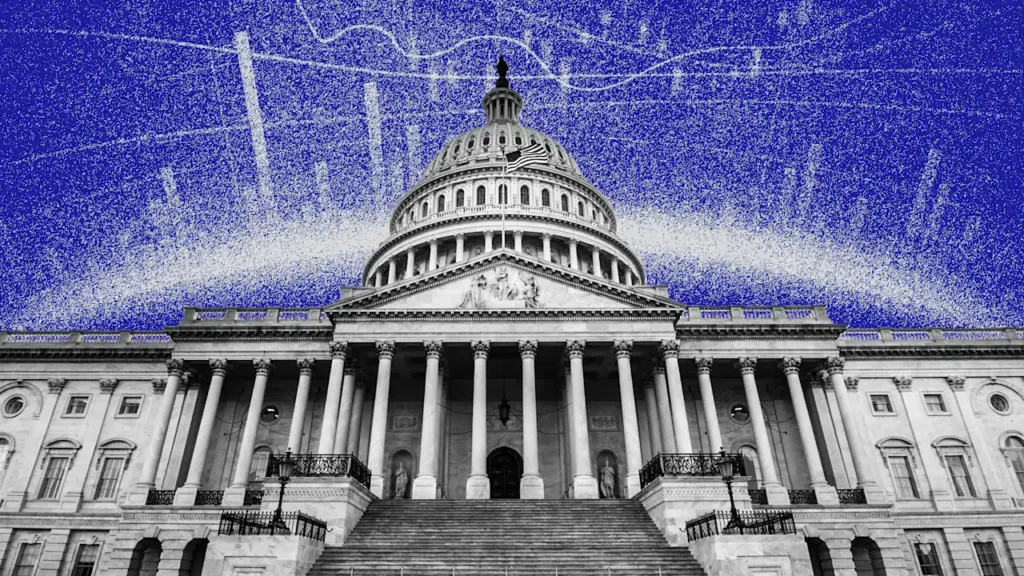
Forty-three days later, the U.S. government shutdown has come to an end. While it wreaked havoc on government services, flights, and paychecks for federal workers, stock market appears to have come through it unscathed.
In fact, by some measures, it improved.
The Dow Jones Industrial Average reached 46,441.10 on the first day of the shutdown. Since October 1, it has grown over 4%, reaching over 48,000 for the first time on Wednesday, November 12.
While the record number came as the shutdown’s end became a sure thing, the Dow had continued to rise throughout the period.
The S&P 500 also followed a mostly upward trajectory throughout the shutdown. It opened at 6,664.92 on October 1 and closed at 6,850.92 on Wednesday.
The tech-heavy Nasdaq Composite also grew about 4% during the shutdown period, even despite concerns of an AI bubble that had dinged shares of major tech companies like Nvidia and Palantir earlier this month.
How do government shutdowns typically impact stock markets?
Historically, shutdowns have not had a significant effect on the markets.
“Government shutdowns tend to be high profile though low-impact market events,” Truist, a financial company, reported ahead ahead of the most recent shutdown. “In the previous 20 shutdowns, there has been almost no change, on average, for the S&P 500, while it has been in positive territory 50% of the time during the shutdown period.”
As the shutdown began, Bloomberg shared data demonstrating the S&P 500’s seemingly unrelated growth and decline during shutdowns. It further reported on the impact of what some experts see as a 16-year-long bull run in U.S. markets.
Both Bloomberg and, more recently, MarketWatch point to historically elevated stocks that have created what many see as inflated valuations for quite a few companies, including many in the tech industry.
